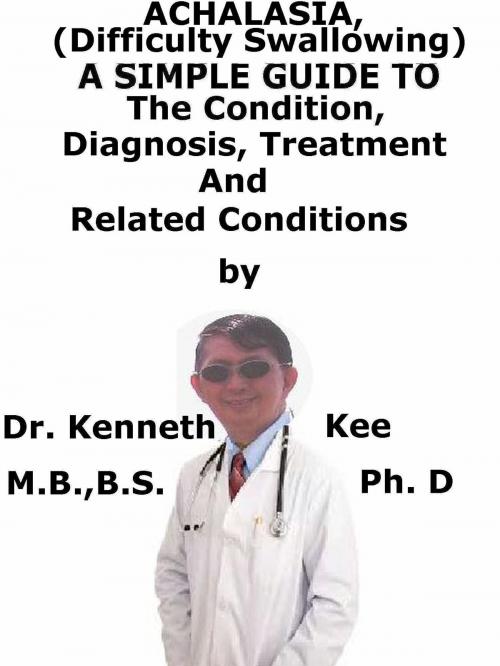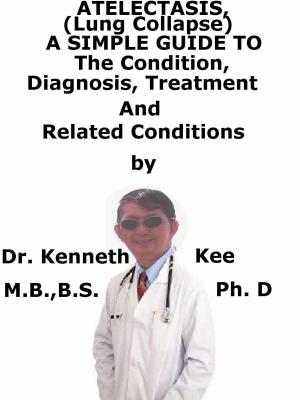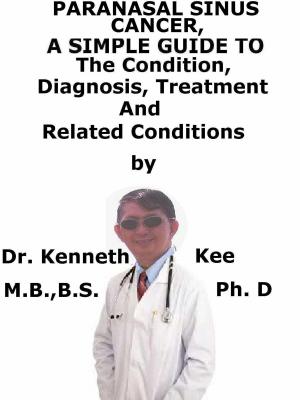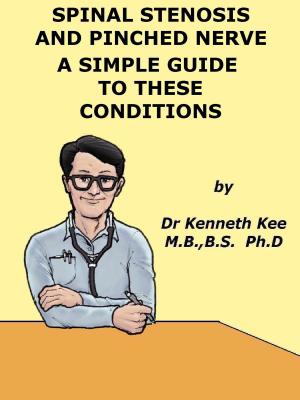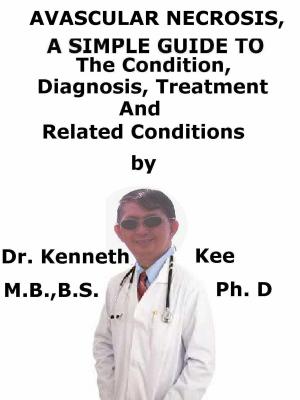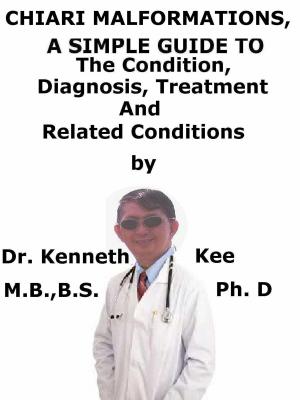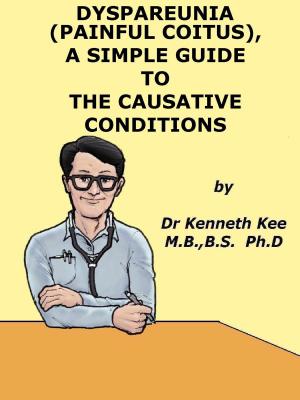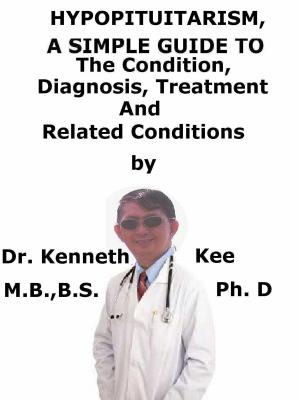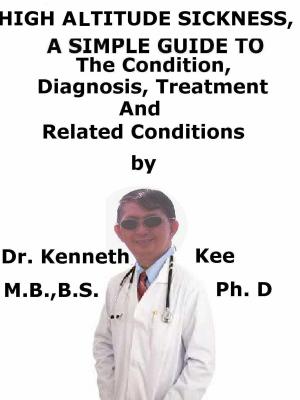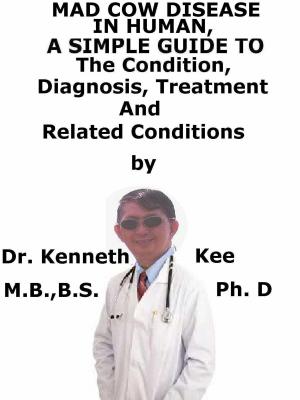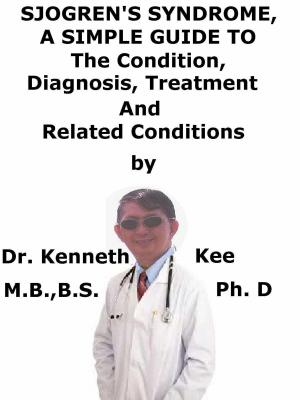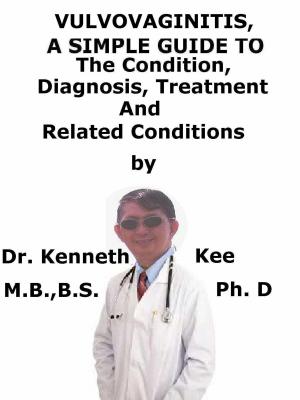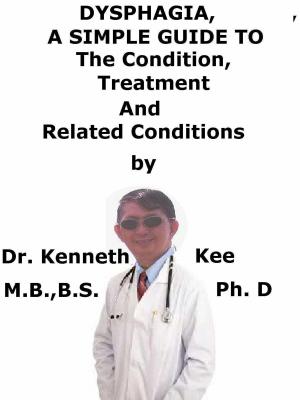Achalasia, (Swallowing Disorder) A Simple Guide To The Condition, Diagnosis, Treatment And Related Conditions
Nonfiction, Health & Well Being, Medical, Specialties, Internal Medicine, Gastroenterology, Health, Ailments & Diseases, Abdominal| Author: | Kenneth Kee | ISBN: | 9781370743735 |
| Publisher: | Kenneth Kee | Publication: | March 19, 2017 |
| Imprint: | Smashwords Edition | Language: | English |
| Author: | Kenneth Kee |
| ISBN: | 9781370743735 |
| Publisher: | Kenneth Kee |
| Publication: | March 19, 2017 |
| Imprint: | Smashwords Edition |
| Language: | English |
Achalasia is a swallowing disorder of motility of the lower esophageal or cardiac sphincter.
The smooth muscle layer of the esophagus has decreased peristalsis and inability of the sphincter to relax produces a functional stricture or functional esophageal stenosis.
The tube that brings food from the mouth to the stomach is the esophagus.
Achalasia makes it harder for the esophagus to move food into the stomach.
Achalasia is a serious condition that affects the esophagus.
The lower esophageal sphincter (LES) is a valve that blocks off the esophagus from the stomach.
If the patient has achalasia, the LES is unable to open up during swallowing, which it is supposed to do.
This results in a backup of food within the esophagus.
This disorder may be inherited, or it may be the effect of an autoimmune disorder, which happens when the body’s immune system wrongly attacks healthy cells in the body.
The degeneration of nerves in the esophagus often adds to the advanced symptoms of the condition.
The most frequent presenting symptom is dysphagia (difficulty in swallowing).
This involves the swallowing of solids more than soft food or liquids.
People with achalasia will often have problem swallowing or a sensation of food being stuck in their esophagus.
This symptom can produce coughing and increases the risk of aspiration, or inhaling or choking on food.
Regurgitation may happen in 80-90% and some patients learn to force it to alleviate pain.
Chest pain, which may become worse after eating, or may be felt as pain in the back, neck, and arms
The barium swallow in achalasia is typical.
The distal esophagus has a narrow segment and the X-ray image looks like a bird's beak.
This is different to the rat's tail appearance of carcinoma of the esophagus.
Manometry is the gold standard test for diagnosis of achalasia and can diagnose up to 90% of patients.
The doctor may make use of esophageal manometry to diagnose achalasia.
The purpose of treatment is to decrease the pressure at the sphincter muscle and permit food and liquids to pass easily into the stomach.
Most achalasia treatments affect the LES.
Several types of treatment can either transiently decrease the symptoms or permanently change the function of the valve.
The first line of treatment is often oral medicines.
1. Nitrates or calcium channel blockers can help loosen the sphincter so food can pass through it more readily.
2. The doctors might also make use of Botox to relax the sphincter.
To treat achalasia more permanently, the doctors can either enlarge the sphincter or change it.
1. Dilation normally requires inserting a balloon into the esophagus and inflating it.
This expands out the sphincter and assists the esophagus to work better.
Occasionally dilation can produces tears in the sphincter.
If this occurs, the patient may require more surgery to repair it.
2. Esophagomyotomy is a form of surgery that can assist the patient if the patient has achalasia.
The doctor will use a large or small incision to reach the sphincter and carefully change it to permit better flow into the stomach.
3. The Heller myotomy is normally considered the best treatment for those who are fit.
Pneumatic dilatation is the favored option for older unfit patients.
If a perforation happens, emergency surgery is required to close the perforation and do a myotomy.
Multiple balloon dilatation with progressive balloon diameter at two months, two years and six years is more effective.
Peroral endoscopic myotomy and endoscopic stent insertion is techniques being explored.
Operative failure may be treated by repeat operation, dilatation or, in extreme circumstances, esophagectomy.
TABLE OF CONTENT
Introduction
Chapter 1 Achalasia
Chapter 2 Causes
Chapter 3 Symptoms
Chapter 4 Diagnosis
Chapter 5 Treatment
Chapter 6 Prognosis
Chapter 7 Dysphagia
Chapter 8 Gastroparesis
Epilogue
Achalasia is a swallowing disorder of motility of the lower esophageal or cardiac sphincter.
The smooth muscle layer of the esophagus has decreased peristalsis and inability of the sphincter to relax produces a functional stricture or functional esophageal stenosis.
The tube that brings food from the mouth to the stomach is the esophagus.
Achalasia makes it harder for the esophagus to move food into the stomach.
Achalasia is a serious condition that affects the esophagus.
The lower esophageal sphincter (LES) is a valve that blocks off the esophagus from the stomach.
If the patient has achalasia, the LES is unable to open up during swallowing, which it is supposed to do.
This results in a backup of food within the esophagus.
This disorder may be inherited, or it may be the effect of an autoimmune disorder, which happens when the body’s immune system wrongly attacks healthy cells in the body.
The degeneration of nerves in the esophagus often adds to the advanced symptoms of the condition.
The most frequent presenting symptom is dysphagia (difficulty in swallowing).
This involves the swallowing of solids more than soft food or liquids.
People with achalasia will often have problem swallowing or a sensation of food being stuck in their esophagus.
This symptom can produce coughing and increases the risk of aspiration, or inhaling or choking on food.
Regurgitation may happen in 80-90% and some patients learn to force it to alleviate pain.
Chest pain, which may become worse after eating, or may be felt as pain in the back, neck, and arms
The barium swallow in achalasia is typical.
The distal esophagus has a narrow segment and the X-ray image looks like a bird's beak.
This is different to the rat's tail appearance of carcinoma of the esophagus.
Manometry is the gold standard test for diagnosis of achalasia and can diagnose up to 90% of patients.
The doctor may make use of esophageal manometry to diagnose achalasia.
The purpose of treatment is to decrease the pressure at the sphincter muscle and permit food and liquids to pass easily into the stomach.
Most achalasia treatments affect the LES.
Several types of treatment can either transiently decrease the symptoms or permanently change the function of the valve.
The first line of treatment is often oral medicines.
1. Nitrates or calcium channel blockers can help loosen the sphincter so food can pass through it more readily.
2. The doctors might also make use of Botox to relax the sphincter.
To treat achalasia more permanently, the doctors can either enlarge the sphincter or change it.
1. Dilation normally requires inserting a balloon into the esophagus and inflating it.
This expands out the sphincter and assists the esophagus to work better.
Occasionally dilation can produces tears in the sphincter.
If this occurs, the patient may require more surgery to repair it.
2. Esophagomyotomy is a form of surgery that can assist the patient if the patient has achalasia.
The doctor will use a large or small incision to reach the sphincter and carefully change it to permit better flow into the stomach.
3. The Heller myotomy is normally considered the best treatment for those who are fit.
Pneumatic dilatation is the favored option for older unfit patients.
If a perforation happens, emergency surgery is required to close the perforation and do a myotomy.
Multiple balloon dilatation with progressive balloon diameter at two months, two years and six years is more effective.
Peroral endoscopic myotomy and endoscopic stent insertion is techniques being explored.
Operative failure may be treated by repeat operation, dilatation or, in extreme circumstances, esophagectomy.
TABLE OF CONTENT
Introduction
Chapter 1 Achalasia
Chapter 2 Causes
Chapter 3 Symptoms
Chapter 4 Diagnosis
Chapter 5 Treatment
Chapter 6 Prognosis
Chapter 7 Dysphagia
Chapter 8 Gastroparesis
Epilogue
